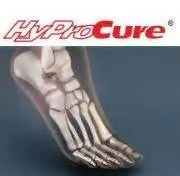
Characterized by a large, unsightly bump on the side of the big toe joint, bunions signal an underlying deformity in the structure of the foot. Left untreated, bunions may become progressively worse, causing severe discomfort, difficulty walking, redness and swelling.
Treatment options vary with the severity of each bunion. Identifying the deformity early in its development is important in avoiding surgery. Common conservative treatments include rest, ice, padding, orthotics and footwear modifications. Many times a combination of these simple lifestyle changes and non-surgical approaches are enough to relieve the pain and stop the progression of the bunion, although these treatments won’t reverse the actual deformity.
When non-surgical treatments fail to relieve your pain or your bunion is interfering with normal, daily activities, Family Foot & Ankle Care, PC may recommend a bunionectomy, which involves the surgical removal of a bunion to reduce pressure and repair the joint. There are a variety of surgical procedures available to treat bunions. The goal of surgery is to correct the deformity by realigning the toe by removing the bony bump and restoring normal, pain-free function.
When you should consider bunion surgery from your podiatrist:
- Nonsurgical, conservative treatment has failed to relieve your bunion pain
- Walking or performing normal, everyday tasks is difficult and painful
- The simple act of wearing shoes causes pain
- Your big toe joint is constantly swollen
Your age and health may also determine your candidacy for bunion surgery. Your podiatrist will work with you to determine the best treatment for your individual needs. The podiatric professionals at Family Foot & Ankle Care, PC have received advanced training in the surgical removal of bunions, relieving the pain and helping patients return to the activities they enjoy.













